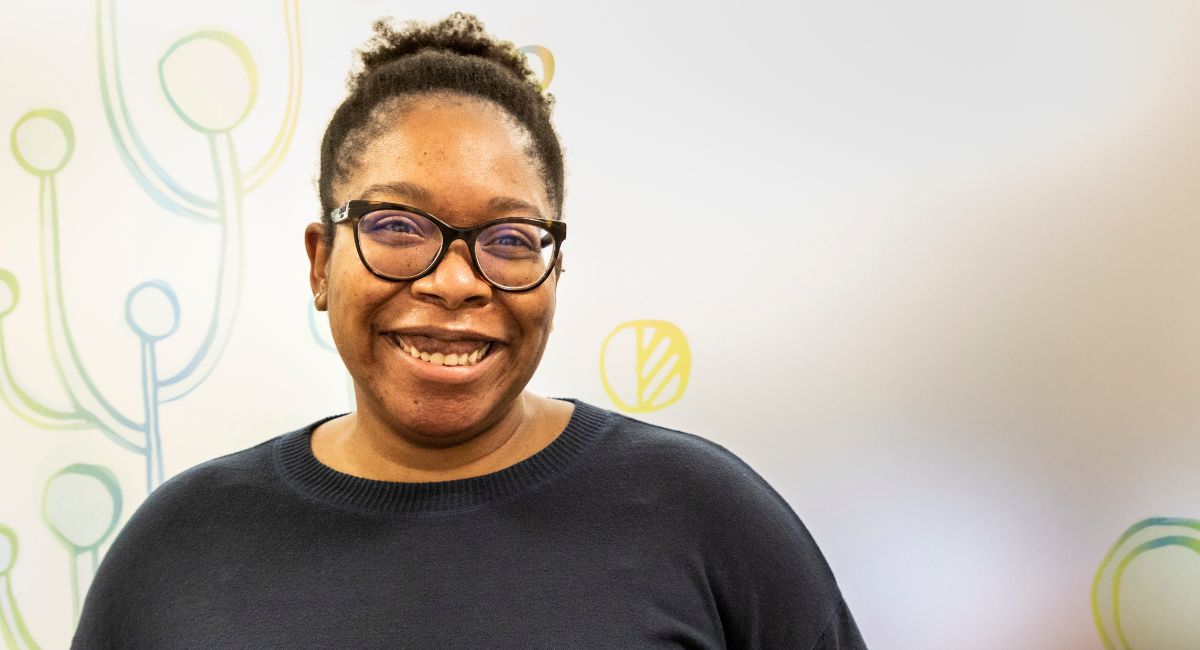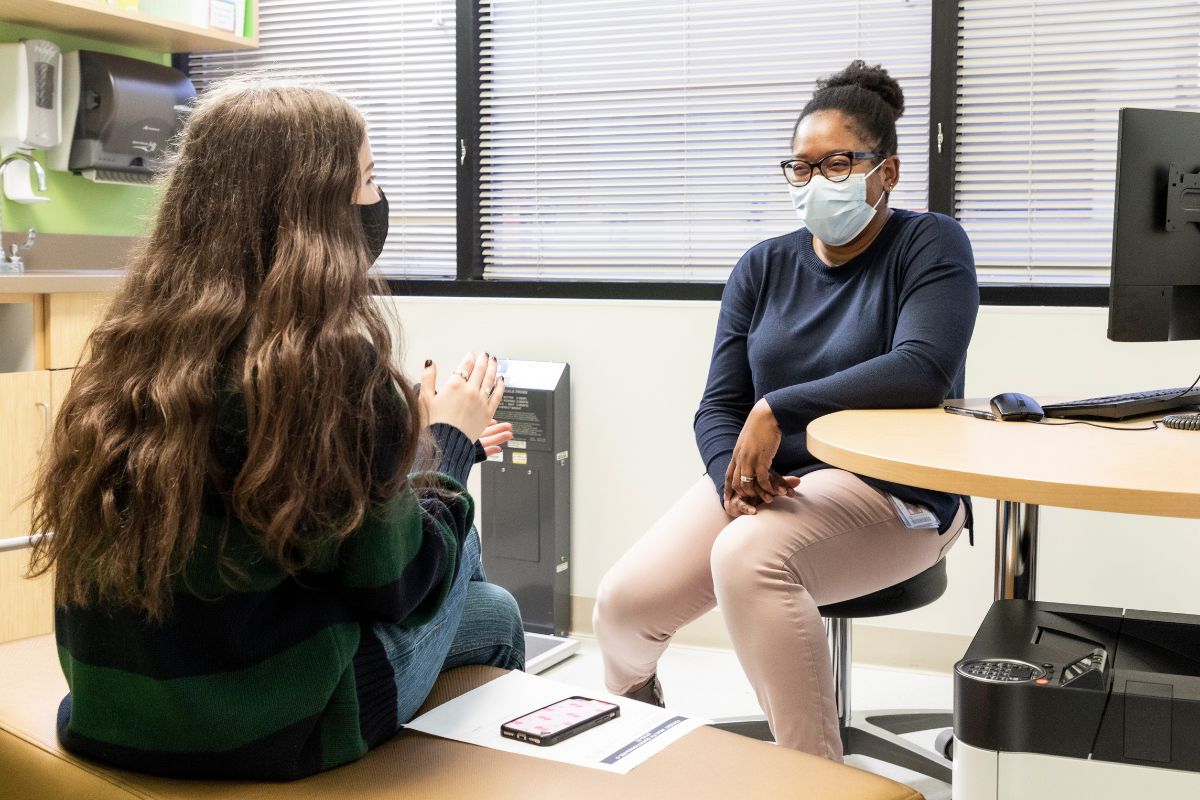
University of Washington School of Public Health (SPH) alumna Dr. Yolanda Evans (MPH, ’11) has a passion for improving adolescent health equity. Throughout her career, she has made an impact on teen health in her various roles as a physician at Seattle Children’s, a blogger, a technology advocate, and a mentor as a UW adjunct associate professor in the Departments of Health Systems and Population Health and Pediatrics – Adolescent Medicine.
For Evans, a career in public health is not solely about her own passions; rather, it’s about pausing and listening to the community’s health needs. Evans, who is chairing the selection committee for the SPH Alumni of Impact Award, shares why it’s important to use technology to improve health information and access, think creatively to expand a much-needed workforce, and listen to the voices of teens to make lasting change in their health and well-being.
Tell us when you first became interested in public health.
I’m a physician and I came into pediatric residency with an interest in working with teens. With teens, we tend to not think broadly about how to prevent common issues related to mental health and reproductive health. Yet we know that the leading reasons of death among adolescents are completely preventable, such as accidents, suicides and homicides. I came into public health wanting to improve things for adolescents. I knew I needed the skills and training to create programs, think through projects and evaluate them to see if what I was doing was improving outcomes.
Why did you decide to come to the UW for graduate school?
I came to the UW to pursue extra training after pediatric residency. I was a fellow in adolescent medicine, and with the fellowship I was able to pursue my interest in public health. I loved the program and the research that was happening here, and I was specifically interested in the prevention of sexually transmitted infections among vulnerable youth. There was a really amazing training opportunity and mentorship here at the School, so it was the right fit for my interests. Some of my public health and fellowship mentors were Sheila Lukehart, Dr. Laura Richardson and Dr. Jane Simoni.
You have worked at Seattle Children’s since July 2011. What are you most proud of?
I’m really proud of my work with technology to improve health information and access for patients and families. At Seattle Children’s, I co-wrote a blog called Teenology 101 for almost 10 years, and I was also the telemedicine director from 2011 to 2015. When the pandemic hit, I worked to increase awareness of video and telemedicine as a tool and helped bring our division on board to use this technology.
Over the last few years, we expanded the use of telemedicine to help kids who are struggling with eating disorders. Previously, we had very narrow acceptance criteria for who we could offer an appointment to because we didn’t have the bandwidth to take on all the referrals. We completely revised our program to now offer telemedicine visits to essentially anyone who is referred. Every family referred is offered a video visit to learn about our program, where we can learn more about what’s going on and offer resources as appropriate. This has really helped lessen the barriers to getting an evaluation.
Another example of expanding health information access through technology was the Teenology 101 blog, which was written for parents of teens. We wrote on all different topics, but one of our most popular and well-read posts was a series on transgender and gender non-binary youth. This series generated so much discussion and commentary online around how parents and caregivers can be supportive and how teens can find information and resources that are accurate and reliable.
What are the challenges in supporting and advocating for adolescent health? Are they the same or different in an urban vs. rural setting?
There are so many disparities and barriers to overcome when it comes to ensuring our own well-being, and our health care system is not set up to accommodate the needs of everyone. If you need care in a language that is not in English, or you have an identity that’s not with the majority, or you come from an underrepresented background — for example, I identify as a Black female — the systems are not set up to support you.
For adolescents, I think that having access to providers who understand your identity, perspective, the challenges you might face, the need for privacy and confidentiality — those are all major barriers. And then when we get into specific things like mental health care access, we don’t even have enough workforce to meet the demands of teens right now.
If you are in a rural area, one of the greatest challenges is access to care, but it is exacerbated. I work for a telemedicine clinic in Alaska and some families can’t drive to the clinic; they have to fly to Anchorage to receive care. Even in Washington state, some counties have no pediatricians or just one pediatrician. If you have anorexia, you might not be able to see a physician that can give you a diagnosis, let alone see a dietitian and a therapist that can help with recovery.

Yolanda Evans with patient
What is needed to improve youth mental health in our state?
We need to screen, but once we screen and evaluate to determine appropriate needs, we must have a workforce in place that can provide the support. One of the exciting things that came out of the last legislative session was a House bill to integrate community health workers into the primary care setting to provide mental health services. By thinking innovatively, we can create a workforce who don’t necessarily need a master’s, but who can still be trained to intervene early on for mental health needs like depression, anxiety and eating disorder care. This way, adolescents aren’t struggling with these issues for months to years before they are helped.
For youth who identify as people of color, or are from gender and sexual minority backgrounds, or who experience other challenges related to social determinants of health like housing, food insecurity, or low socioeconomic status, we need to have more services available. I think programs that were expanded during the pandemic like access to lunch and breakfast at school must continue to improve the health and well-being of kids moving forward. We have to be creative about our workforce and we need screening tools in primary care, school settings and other settings where kids are engaged so we can identify mental health issues earlier.
In your opinion, how do we improve health equity when it comes to adolescent health?
We as a public health discipline need to be comfortable with discomfort and explore things that are outside of what we usually do. We need to listen, recognize others’ perspectives and then challenge the systems that are in place so health outcomes can be improved. Our commitment to anti-racism and recognizing and intervening on bias and micro-aggressions are key to improving equity for all children.
One example that comes to mind is the shift we’ve seen recently with reproductive health justice. Historically, when teens needed help with reproductive services like contraception or infection screening, we as health care providers would talk about the options with the highest efficacy first. But that might not be the agenda of the adolescent, even though it may be ours. They might want an option that helps with cramps or allows them to become a parent in a year or two. We’ve really shifted our counseling strategies to ones that are more patient-centered, and by pausing and listening to the requests and goals of the individual, we can guide them towards an option that fits what they want versus what we want as a provider.
This is where the anti-racism work comes in. I think historically in medicine, people of color have been pushed to have procedures early on, have forced sterilization or it’s been automatically assumed that they need the option that prevents pregnancy. It’s important to recognize where racism and bias come in to play in our counseling so we can shift our approach. Another example is with eating disorders screening — recognizing that it’s not just upper middle class white females who have eating disorders — all people of different body sizes, races, genders and ethnicities can experience this. We really should be talking more about eating and nutrition, how people perceive their bodies, and self-esteem with everyone experiencing disordered eating.
How have you seen your work have impact on youth in our state?
I recently received an email from a patient who just wanted to let me know that they were doing well. I saw them as a young teen; they had anorexia nervosa and they really struggled, so to get that email 10 years later saying, “hey, I’m doing really well, I’m a professional in the health care setting and I just wanted you to know the impact you had on me,” really brought me to tears.
More broadly, I’ve had the opportunity to mentor students in the UW School of Public Health who are now working in the field. I’ve also been involved in some local advocacy work for mental health services. It’s really exciting to see the fruit of conversations, projects and mentorship, as well as House bills that get passed, the changes in how we counsel people, and the use of telemedicine more broadly.
What is your advice for public health students entering the workforce as they become our future public health leaders?
My advice would be to pause and listen. We come into public health because we want the health and well-being of our communities to be front and center and to achieve good health outcomes for all. However, sometimes our passion ends up pushing our agenda instead of the agenda of the communities. By pausing and listening, we can hear what our communities are asking for, where the need is and what the gaps are. Listening to others can help us identify tools that are available and the strengths of the people around us so we can move things forward.